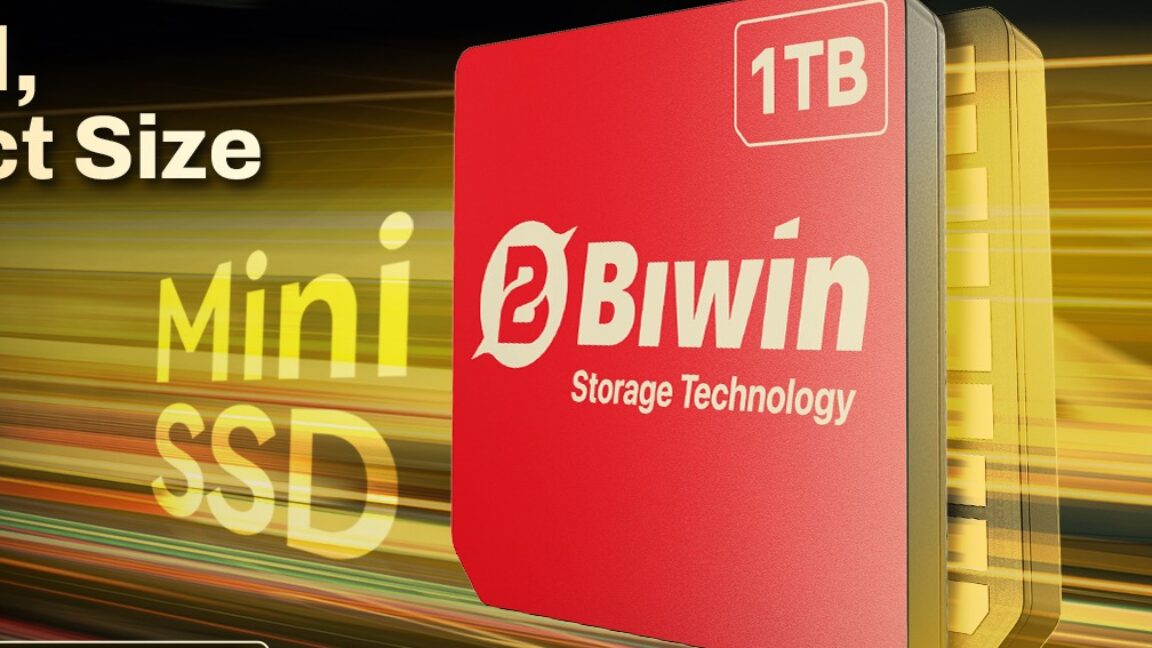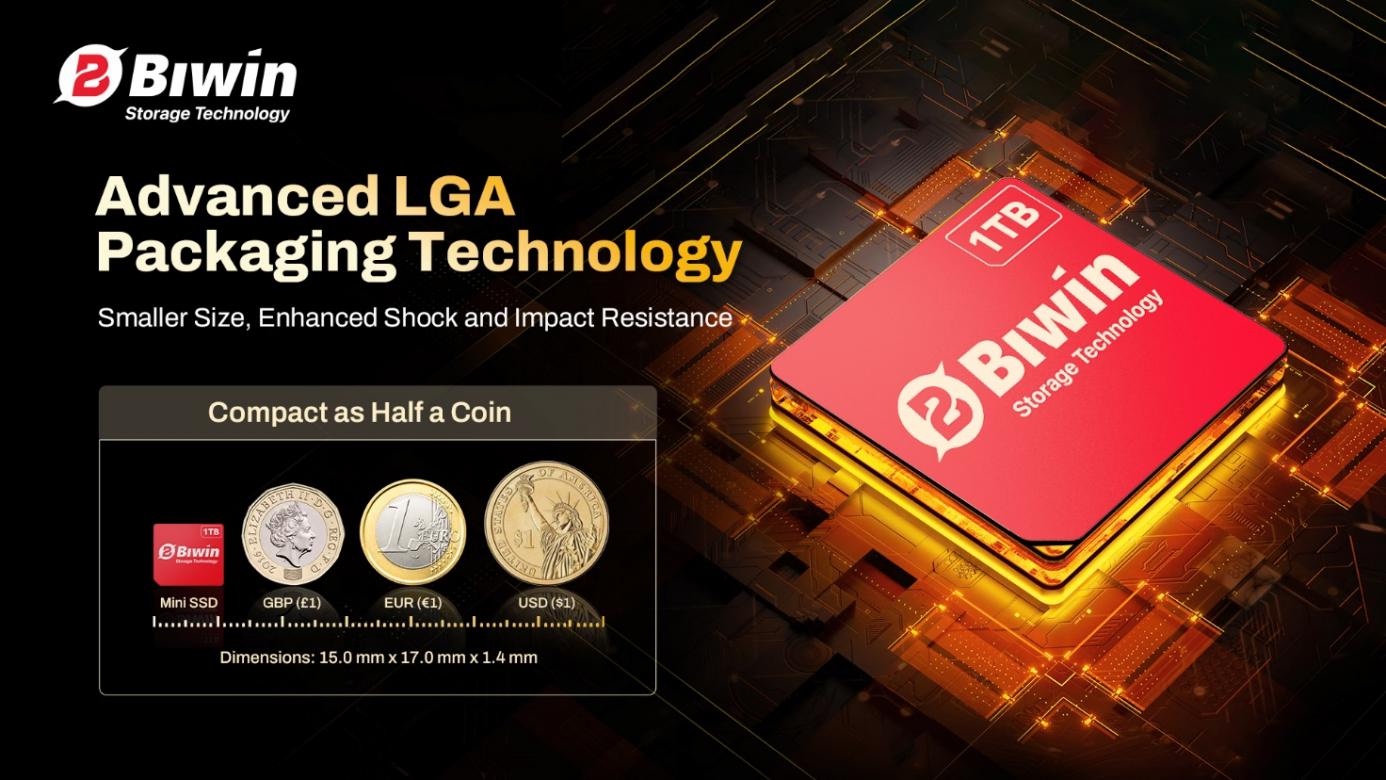
Credit: Biwin
Earlier this year, Nintendo helped popularize the microSD Express standard by requiring it for the new Switch 2 console. Created in 2019, the specification had languished in relative obscurity for years because the cheap, plentiful non-Express microSD cards were generally fast enough for the things that people were using them for, and because most hardware didn't support microSD Express cards in the first place.
However, Nintendo's console needed performance closer to that of an internal SSD to run games, given that the more powerful Switch 2 can run more of the titles being developed for SSD-equipped systems such as the PlayStation 5, the Xbox Series S and X, and the PC. And now other companies are trying to push the "fast, removable storage" envelope even further.
The Verge reports that a Chinese company called Biwin has developed the "Mini SSD," a 15 by 17 mm-thick card that supports read speeds of up to 3,700MB per second due to a two-lane PCI Express 4.0 interface. The current microSD Express standard can support roughly the same peak speeds when connected to two PCIe 4.0 lanes. But in reality, most of today's cards top out around 900MB per second, roughly the amount of bandwidth available from a single PCI Express 3.0 lane.
Originally showcased in March, Biwin says its Mini SSD uses LGA packaging to squeeze NAND chips and an SSD controller onto the tiny cards, which are inserted into small metal trays and inserted into systems like a SIM card. The Verge reports that a pair of Chinese-made AMD-based gaming portables—the GPD Win 5 and the OneXPlayer Super X—are advertising support for the cards, which Biwin says will come in capacities between 500GB and 2TB.
The Mini SSD card isn't and may never be a formally ratified standard, but it does aim to solve a real problem for portable gaming systems—the need for fast storage that can load games at speeds approaching those of an internal SSD, without requiring users to take their own systems apart to perform upgrades.
Why are games getting so dang big, anyway?

Big storage, small size.
Credit: Biwin
A 2023 analysis from TechSpot suggested that game size had increased at an average rate of roughly 6.3GB per year between 2012 and 2023—games that come in over 100GB aren't the norm, but they aren't hard to find. Some of that increase comes from improved graphics and the higher-resolution textures needed to make games look good on 4K monitors and TVs. But TechSpot also noted that the storage requirements for narrative-heavy, cinematic-heavy games like The Last of Us Part 1 were being driven just as much by audio files and support for multiple languages.
"In total, nearly 17 GB of storage is needed for [The Last of Us] data unrelated to graphics," wrote author Nick Evanson. "That's larger than any entire game from our 2010 sample! This pattern was consistent across nearly all the 'Godzilla-sized' games we examined—those featuring numerous cinematics, extensive speech, and considerable localization were typically much larger than the rest of the sample in a given year."
For another prominent recent example, consider the install sizes for the Mac version of Cyberpunk 2077. The version of the game on Steam, the Epic Games Store, and GOG runs about 92GB. However, the version available for download from Apple's App Store is a whopping 159GB, solely because it includes all of the game's voiceovers in all of the languages it supports. (This is because of App Store rules that require apps to have all possible files included when they're submitted for review.)
It's clear that there's a need for fast storage upgrades that don't require you to disassemble your console or PC completely. Whether it's this new "mini SSD," a faster iteration of microSD Express, or some other as-yet-unknown storage format remains to be seen.

-
 C114 Communication Network
C114 Communication Network -
 Communication Home
Communication Home


